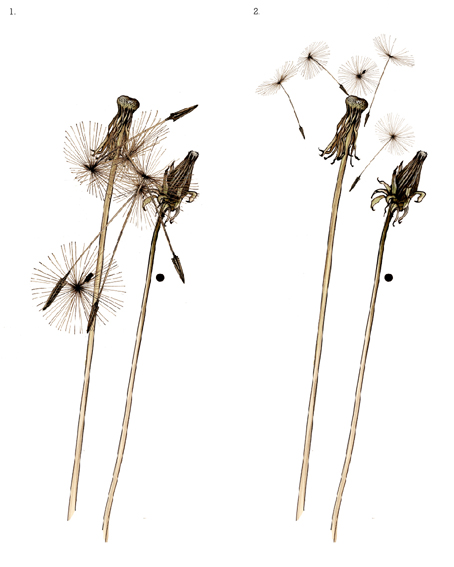Visiting Scotland a few weeks ago, the rocks were covered in lichen, the hills in heather and bracken and the woods in blaeberries (bilberries). It was spectacular to see this abundance of vegetable dyestuffs used traditionally in the dyeing of tartans and tweeds.
Crotal is the common name for the several species of lichen that grow on the rocks and which give the famous chestnut and reddy brown colours (and woody smell) used originally to make Harris Tweed. Ragweed was used to give orange hues...

...heather and bracken gave a green and yellow dyes, black dyes were produced from alder bark and dock roots, birch leaves and bog myrtle produced a dull yellow and peat soot produced yellowy browns. Alongside the indigenous dyes, Indigo and madder were imported for shades of blue and red.
The scoured yarn was usually mordanted before dyeing and in the past mordants would have come from natural sources; rock alum, iron rich mud and other mineral deposits such as iron and copper sulphides. An alkali or acid would also be added to the dye vat to help absorption of the dye to the fibre and in the past stale urine, tannins, wood ash, citric and oxalic acids (such as crab apple and rhubarb) were used for this.
The scoured yarn was usually mordanted before dyeing and in the past mordants would have come from natural sources; rock alum, iron rich mud and other mineral deposits such as iron and copper sulphides. An alkali or acid would also be added to the dye vat to help absorption of the dye to the fibre and in the past stale urine, tannins, wood ash, citric and oxalic acids (such as crab apple and rhubarb) were used for this.
Lichen, heather, birch leaves and oak galls
Two of the best recipe books I have found for dyeing with natural dyes are 'Natural Dyes - Fast or Fugitive and Natural Dyes for Vegetable Fibres, both by Gill Dalby and available along with a vast range of natural dyes from P and M Woolcraft .
For block printing recipes, indigo vats and interesting (and archaic!) dye recipes - Susan Boscence's book 'Hand block printing and Resist dyeing' is very informative. Some of the ingredients are difficult or impossible to source nowadays or are simply too poisonous to consider using. I found that dyeing fabrics in iron rust and printing with print pastes made up with solutions of oak galls and other plants high in natural tannins effective and interesting (although limiting in colour). Here's an interesting indigo recipe from her book...
RECIPE
"a very old Shetland recipe used for fisher folks' jerseys which was guaranteed absolutely fast:
Preserve a gallon of urine for over a fortnight (male urine is best) preferably in a warm place, stir occasionally, and in this soak one and a half ounces powdered indigo tied in a muslin cloth. Soak wool in warm urine for ten minutes before putting in the tub - which should be kept warm and stirred occasionally, it takes two weeks to get a good blue"
Below some of my dye notes recording natural dye and print recipes and colours on Hemp, Cotton and Silk...

... even the limpets in Scotland reminded me of pleated tartan?

















